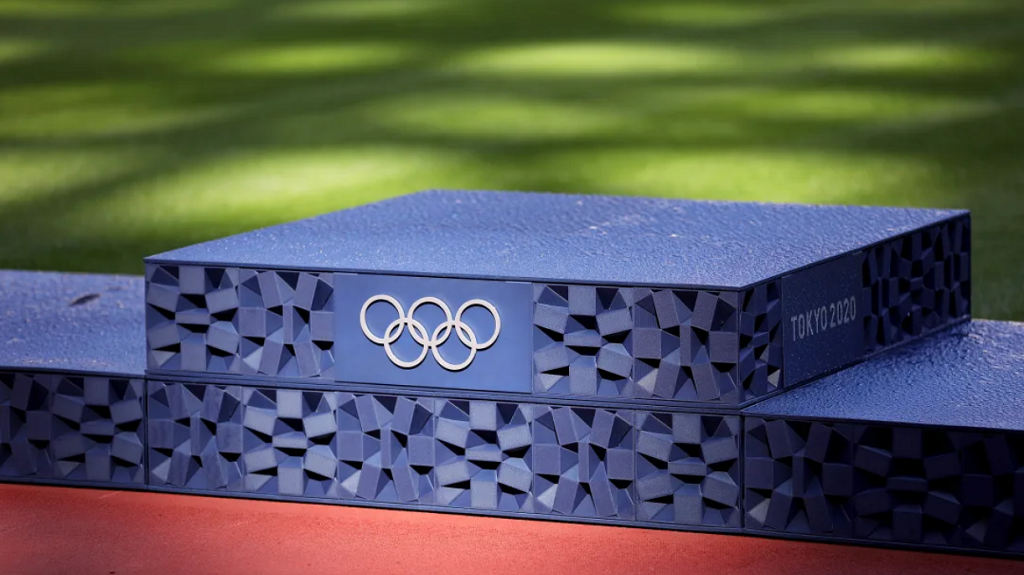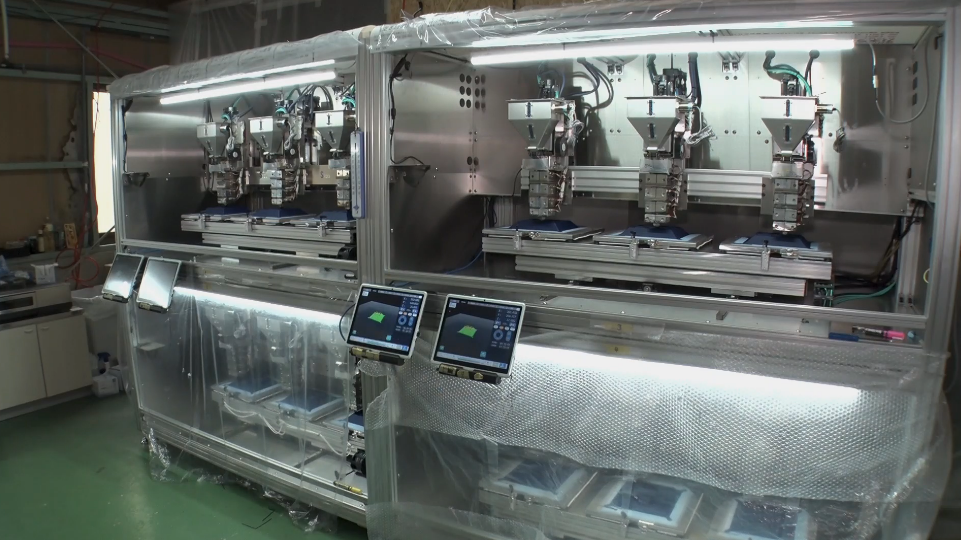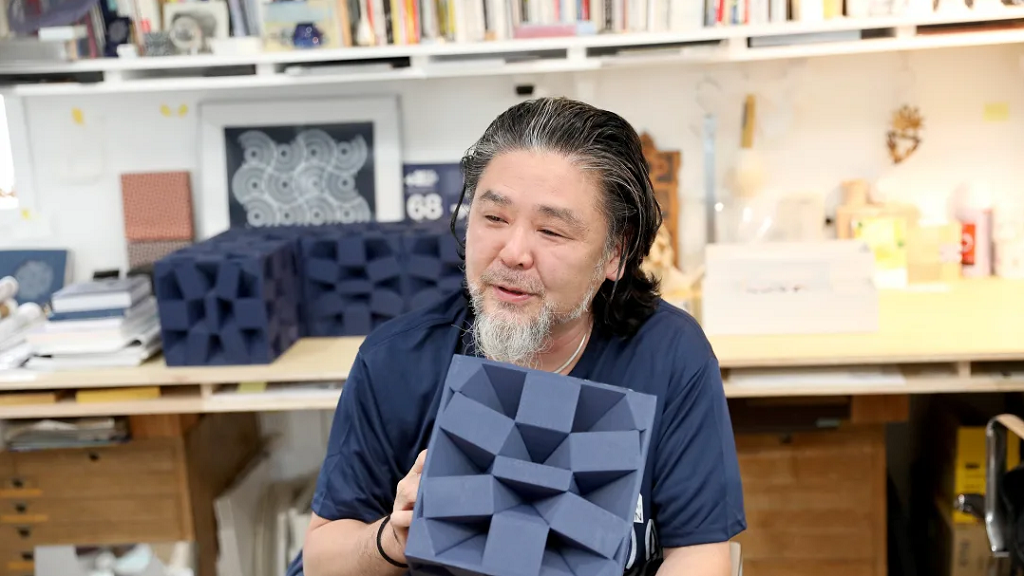
Olympians and Paralympians at this summer’s Tokyo games will be awarded atop beautiful podiums 3D printed from recycled plastics.
Two years ago, Procter & Gamble (P&G) and the Tokyo 2020 Organizing Committee announced their joint initiative to build podiums hitting all the buzzwords: sustainable, 3D printing, recycling, repurposed.
Officially kicking off June 13, 2019, the project saw more than 2,000 boxes placed in Japanese retail locations of AEON to collect plastic containers. P&G added to that plastic haul with more plastic waste recovered from the oceans. The 2019 announcement explained:
“The overall goal is to collect 1.5 million pieces of plastic packaging consisting of polyethylene and polypropylene plastic from consumers to produce recycled plastic resin. Through this, 75 grams of carbon dioxide will be saved for each piece of plastic recycled. Once the goal of 1.5 million pieces is reached, Tokyo 2020 and P&G will have saved enough energy to light a normal household for 112 years.”
The podiums were initially planned for a great unveiling a year later — but as we know, June 2020 looked nothing like what we’d expected. Following a pandemic postponement, the Tokyo 2020 games are planned for this summer — and so June 2021 has finally seen the unveiling of the now-completed podiums.

The plastic collected through this initiative was made into filament and 3D printed into the final design. More than 24.5 tonnes of recycled plastics came together to be processed and dyed a particular shade of indigo for the platforms at the Japanese-hosted games.
Carefully conceived by designer Asao Tokolo, the podium is made up of many messages throughout its geometry. Tokolo, who also designed the emblems for Tokyo 2020, incorporated all the design elements in a way that “embodies the ‘diversity and inclusion’ message embedded in the emblem,” such as a “chequered ‘ichimatsu moyo’ pattern that represents the concept of the emblems,” the Tokyo 2020 site explains.
“The podium design originates from the Tokyo 2020 emblems, which are based on the shape of diamonds. By modifying the three types of rectangles that formed the basic components of the emblems, I created different shapes and patterns. Whereas the emblems aimed at forming a dodecagon, or a 12-sided polygon, that looked like a circle, the podium was created by laying out cubes and cuboids produced by reconfiguring the dodecagon. It didn’t take long to come up with the design because I had been making plans to create a three-dimensional version of the emblems. The podium being a horizontal object, I wanted it to be a cuboid or cube, so my first task was to find the suitable unit for the design based on geometry,” the designer explains in an interview with Tokyo 2020.
Each of the cubes weighs just 1.5kg (about 3lbs). They were 3D printed, as shown in a Tokyo 2020 video, on an industrial FFF 3D printer farm style setup.
“Most podiums employ wrapping for their design, but instead of covering the platform with some decorative print, our podium is based on the philosophy of cubes, which form the structure itself. My design method was mainly based on straight line axis, but the team of geniuses worked out how to apply 3-D printing for this, and produced the products by fully operating 3-D printers. Although I hadn’t met all the members on the team, a solidarity of sorts was formed among us, which must have been the outcome of the ‘connections’ forged,” designer Tokolo said.
The genius team who banded together to make the design 3D printable were led by Keio University Professor Hiroya Tanaka. From the design and technical teamwork to the corporate sponsorship and sustainability project drive, collaboration was vital to every part of the effort to make Tokyo 2020 an event celebrating connection — a coming together, especially as we are hopefully emerging from a pandemic.

“The Olympic and Paralympic Games provide an immense opportunity for graphic design and architecture to exert an impact. The COVID-19 crisis has opened our eyes to the reality of our medical care system as well as how we should behave in large cities. As the symbols of connection, the Tokyo 2020 emblems and podium will help spur connections, which hopefully will develop into solidarity. The podium production team includes some young members aged around 22 who worked on 3-D printers. Such geometric technique and accumulation of collective intelligence will become part of the younger generation’s academic learning, which also represents a baton passed on,” Tokolo said.
Once the games go on, starting in July, Olympian and Paralympian athletes will be awarded their medals atop these beautiful platforms. (It’s worth mentioning as well that the Tokyo 2020 bronze, silver, and gold medals were also created from electronic waste.)
Following the games, it seems there could be two routes for the 3D printed podiums. The initial P&G plan was for the plastic to be recycled again, living their third life as P&G product packaging. Their designer, though, would also like to see some of the podium parts displayed in homes, embassies, or as memorabilia — or even recreated, “because we have the data.”

In all, the Tokyo 2020 games will be celebrating so much of where we are these days, celebrating achievements in athleticism, the global community, increasing focus on sustainability, and using technology to bring it all — and us all — together.
Via Tokyo 2020, Tokyo 2020, Olympics.com, and BusinessWire
